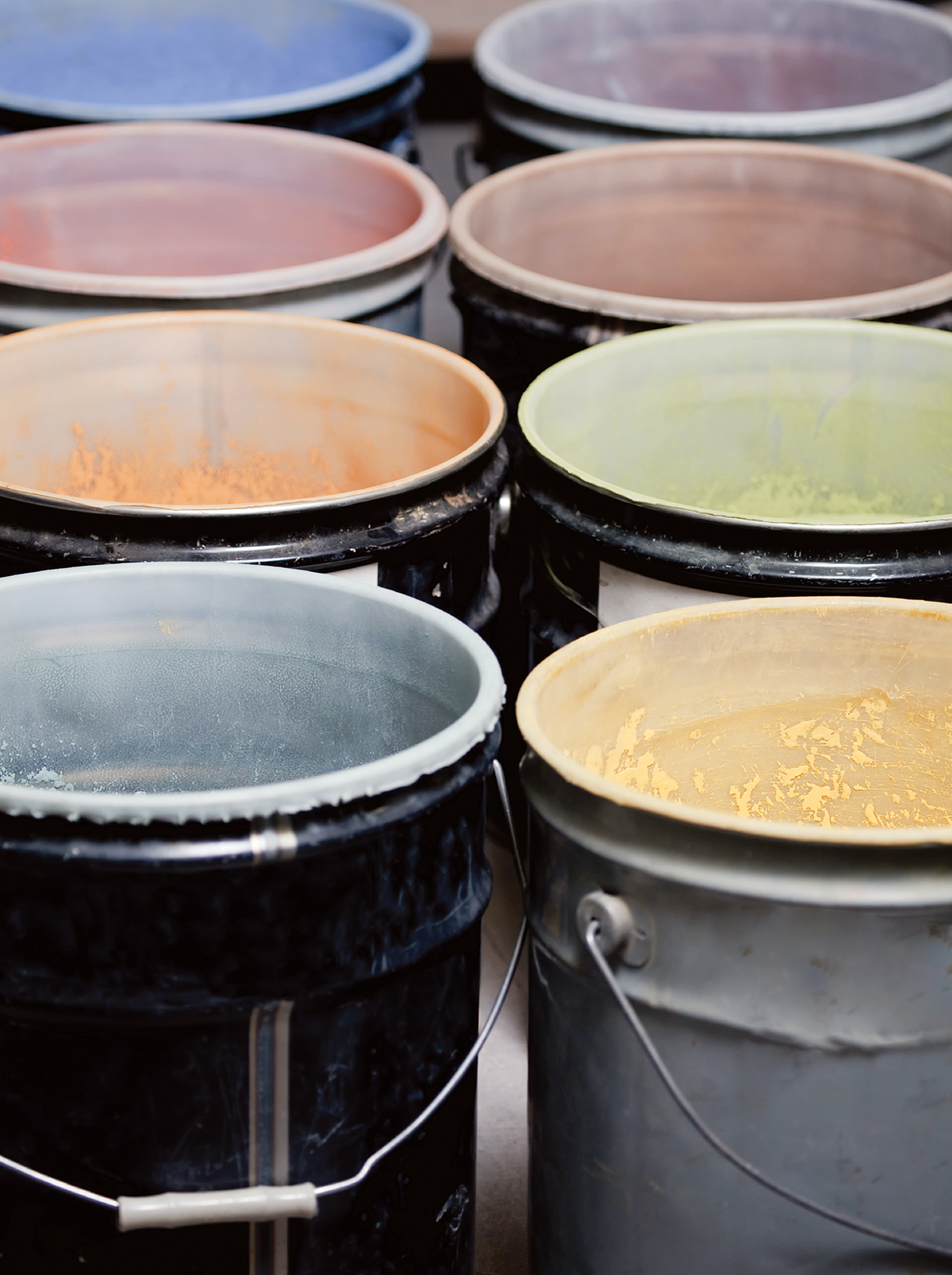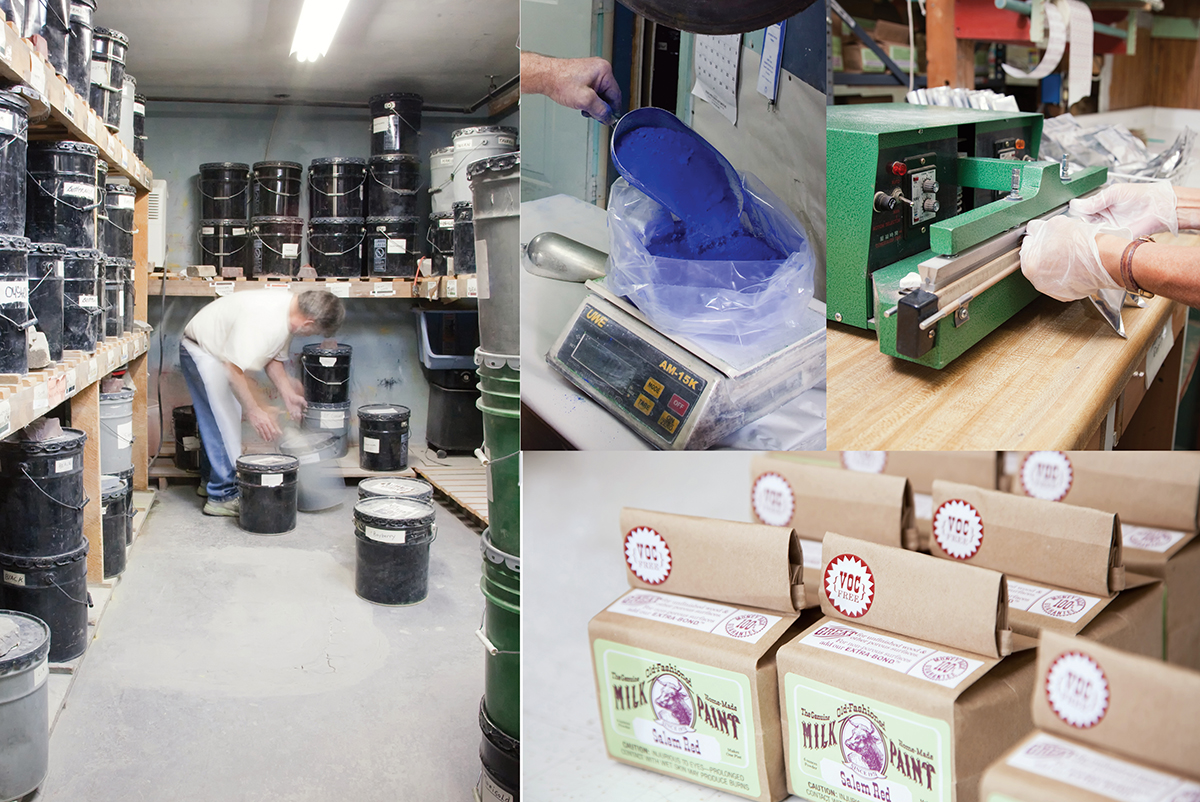Milking It
 THE OLD-FASHIONED MILK PAINT company happened almost by accident. In the mid-1970s, Groton-based furniture maker Charles Thibeau couldn’t buy a genuine finish for the 17th- and 18th-century reproductions he built in his workshop.
THE OLD-FASHIONED MILK PAINT company happened almost by accident. In the mid-1970s, Groton-based furniture maker Charles Thibeau couldn’t buy a genuine finish for the 17th- and 18th-century reproductions he built in his workshop.
“[The furniture] would have originally been painted with [homemade] milk paint, but you just couldn’t find it anymore,” says Anne Thibeau, who runs the 36-year-old company for her father, now in his eighties. “It really fell out of favor once the paint can was invented and modern latex paint came about; people didn’t want to mix their own paint anymore.”
Determined to find a solution, Charles spent a few years researching archival documents at the Boston Public Library and MIT. He looked at hundreds of formulas for milk paint before zeroing in on the most basic recipe, which utilizes casein, a protein found in dairy milk, mixed with lime powder and crushed mineral pigments.
As an environmentalist (he founded the now-defunct National Foundation for Environmental Control), Charles wanted to manufacture a low-impact product. So he sought to avoid preservatives like formaldehyde, developing a powdered mixture activated simply with tap water. The result is a milky concoction that sinks deep into the surface of unvarnished wood for an earthy, streaky finish.
When Yankee magazine came calling in 1974 to research their Yankee Magazine Book of Forgotten Arts, Charles and his family were working out of their Groton home’s basement. Once the book featuring their product hit shelves, however, their phone started ringing off the hook – and it hasn’t stopped since.
Today, the Old-Fashioned Milk Paint Company operates out of a converted two-car garage and employs half a dozen people. The paint powder is sold in paper bags that hold enough to make a pint ($10), a quart ($17), or a gallon ($46). “It saves on shipping and waste, and is 100-percent biodegradable,” says Anne, who used her art degree to formulate the color palette. There are now 20 basic hues available, each of which can be mixed with the “Snow White” milk paint to achieve lighter tints. The paint is sold through the company’s website, milkpaint.com, as well as a variety of dealers, museums, and woodworking shops.
Recently, Anne and her husband, Brian Senecal, went back to the drawing board to create a milk-based paint that would adhere to previously painted walls. (The consistency of the original formula is best suited to porous unfinished wood.) “At the same time, we bought our house, which served as a huge blank canvas; there were some experiments that didn’t quite work out,” says Anne.
Their new product, named Safe Paint, is currently available in the same 20 colors as the original milk paint, but offers a more uniform appearance. It’s become popular among environmentally minded home-owners and builders who appreciate the paint’s light eco-footprint.
“We are one of the few companies that can still say ‘made in the U.S.A.’ and ‘made in Massachusetts,'” says Anne. “We hope that [our business] will stay in the family when we are too old to make paint.”
Photographs By Cheryl Clegg
